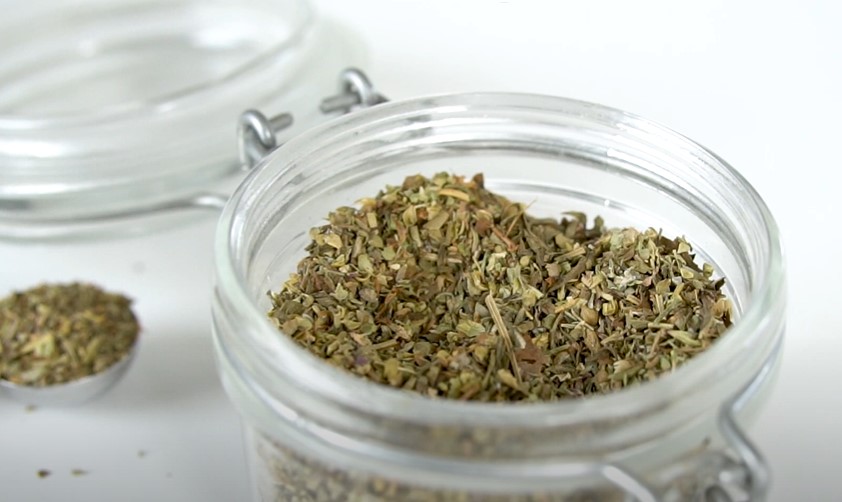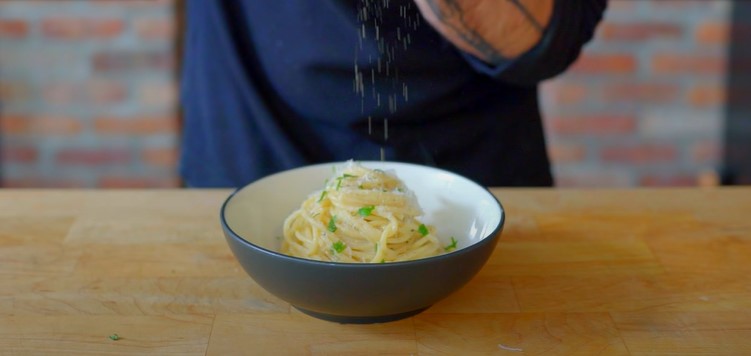Enhance your culinary creations with this homemade Italian seasoning blend. It's a fragrant mix that brings the best of traditional Italian herbs to your dishes. Whether you're seasoning pasta, meats, or vegetables, this blend will add a delightful burst of flavor.

Photos of Italian Seasoning Recipe
Some of the ingredients in this Italian seasoning recipe might not be staples in every kitchen. For instance, dried marjoram and dried sage are not as commonly used as dried oregano or dried basil. If you're heading to the supermarket, make sure to check the spice aisle for these less common herbs.
Ingredients for Italian Seasoning Recipe
dried oregano: A staple in Italian cuisine, known for its robust and slightly bitter flavor.
dried marjoram: Similar to oregano but milder and sweeter, adding a subtle complexity.
dried thyme: Offers a sharp, earthy taste that pairs well with other herbs.
dried basil: Adds a sweet, herbal note with hints of mint and pepper.
dried rosemary: Provides a pine-like aroma and a strong, distinct flavor.
dried sage: Known for its savory, slightly peppery taste that complements the other herbs.
One reader, Daisey Leblanc says:





This Italian seasoning recipe is fantastic! The blend of herbs adds a perfect, authentic flavor to my dishes. It's easy to make and store, making it a kitchen staple. Highly recommend!
How To Make Italian Seasoning
Here’s a quick and easy Italian seasoning blend made with a handful of dried spices, perfect to add savor and aroma to a variety of dishes.
Serves:
Ingredients
- 1½tspdried oregano
- 1tspdried marjoram
- 1tspdried thyme
- ½tspdried basil
- ½tspdried rosemary
- ½tspdried Sage
Instructions
-
Whisk all seasonings together in a bowl until combined. Use immediately or store in a sealed container.
Nutrition
- Calories: 1.02kcal
- Fat: 0.03g
- Saturated Fat: 0.01g
- Monounsaturated Fat: 0.00g
- Polyunsaturated Fat: 0.01g
- Carbohydrates: 0.23g
- Fiber: 0.15g
- Sugar: 0.01g
- Protein: 0.04g
- Sodium: 0.17mg
- Calcium: 6.32mg
- Potassium: 4.55mg
- Iron: 0.24mg
- Vitamin A: 0.64µg
- Vitamin C: 0.11mg
Crucial Technique Tip for Making Italian Seasoning
For a more intense flavor, lightly crush the dried oregano, dried marjoram, dried thyme, dried basil, dried rosemary, and dried sage with a mortar and pestle before mixing. This releases the essential oils and enhances the overall aroma and taste of your Italian seasoning.
Time-Saving Tips for Making Italian Seasoning
Measure in bulk: Measure larger quantities of dried oregano, dried marjoram, dried thyme, dried basil, dried rosemary, and dried sage at once to save time.
Use a spice grinder: Grind the dried herbs together for a finer blend and quicker mixing.
Store in batches: Make a large batch and store in an airtight container for future use.
Label your container: Clearly label your Italian seasoning container to avoid confusion and save time searching.
Pre-measured packets: Create pre-measured packets for quick use in recipes.
Substitute Ingredients For Italian Seasoning Recipe
dried oregano - Substitute with dried basil: Both herbs have a slightly sweet and peppery flavor, making them interchangeable in many recipes.
dried oregano - Substitute with dried thyme: Thyme has a similar earthy and minty profile that can mimic the complexity of oregano.
dried marjoram - Substitute with dried oregano: Oregano is a close relative of marjoram and shares a similar flavor profile, though slightly more robust.
dried marjoram - Substitute with dried basil: Basil's sweet and slightly peppery taste can complement dishes in a similar way to marjoram.
dried thyme - Substitute with dried rosemary: Rosemary has a strong, pine-like flavor that can stand in for thyme in many dishes.
dried thyme - Substitute with dried savory: Savory has a peppery and slightly minty flavor that can replace thyme effectively.
dried basil - Substitute with dried oregano: Oregano's sweet and slightly spicy flavor can mimic basil in many recipes.
dried basil - Substitute with dried marjoram: Marjoram has a mild, sweet flavor that can substitute for basil in a pinch.
dried rosemary - Substitute with dried thyme: Thyme's earthy and minty notes can replace rosemary in many dishes.
dried rosemary - Substitute with dried sage: Sage has a strong, slightly peppery flavor that can stand in for rosemary.
dried sage - Substitute with dried thyme: Thyme's earthy and slightly minty flavor can replace sage in many recipes.
dried sage - Substitute with dried rosemary: Rosemary's strong, pine-like flavor can mimic the robustness of sage.
Best Way to Present Homemade Italian Seasoning
Use high-quality dried herbs: Ensure that your dried oregano, dried marjoram, dried thyme, dried basil, dried rosemary, and dried sage are of the highest quality to enhance the flavor profile.
Create a fine blend: Use a mortar and pestle to gently crush the dried herbs together. This will release their essential oils and create a more aromatic and flavorful seasoning.
Store in an airtight container: Transfer the mixed seasoning into a small, airtight glass jar to preserve its freshness and potency. Label the jar with the date and contents.
Present in a stylish container: Serve the Italian seasoning in a small, elegant glass container with a tight-fitting lid. This not only keeps the seasoning fresh but also adds a touch of sophistication to your presentation.
Pair with a fresh dish: Suggest using the Italian seasoning on a beautifully plated dish such as a Caprese salad or bruschetta. This will demonstrate the versatility and enhance the visual appeal of the seasoning.
Highlight the aroma: Before serving, gently warm the seasoning in a small pan to release its aromatic qualities. This will captivate the senses of the culinary professionals and showcase the depth of flavor.
Provide tasting notes: Offer a small card with tasting notes and suggested uses for the Italian seasoning. This adds an educational element and shows your expertise in flavor pairing.
Garnish with fresh herbs: Accompany the seasoning with a small sprig of fresh rosemary or thyme on the side. This not only enhances the presentation but also provides a visual cue to the ingredients used.
Essential Tools for Making Italian Seasoning at Home
Whisk: A whisk is essential for blending the dried herbs together evenly, ensuring a consistent mix.
Mixing bowl: A mixing bowl provides a spacious area to combine all the dried herbs without spilling.
Measuring spoons: Measuring spoons are crucial for accurately measuring out each herb to maintain the correct proportions.
Sealed container: A sealed container is necessary for storing the Italian seasoning to keep it fresh and aromatic.
Funnel: A funnel can be helpful when transferring the mixed seasoning into the sealed container, preventing any mess.
Storing and Freezing Homemade Italian Seasoning
Store the Italian seasoning in an airtight container, such as a glass jar or a plastic container with a tight-fitting lid. This will help preserve the flavor and aroma of the herbs.
Keep the container in a cool, dry place away from direct sunlight and heat sources. A pantry or cupboard is ideal for storing your homemade Italian seasoning blend.
When stored properly, the Italian seasoning should maintain its quality for up to 6 months. However, for the best flavor, it is recommended to use the seasoning within 3-4 months.
To extend the shelf life of your Italian seasoning, you can store it in the refrigerator. This is especially helpful in hot and humid environments where the herbs may lose their potency more quickly.
If you want to store the Italian seasoning for an even longer period, you can freeze it. To do this, place the seasoning blend in a freezer-safe container or resealable plastic bag, removing as much air as possible before sealing.
When freezing, the Italian seasoning can maintain its quality for up to 1 year. However, keep in mind that the herbs may lose some of their texture and become slightly more crumbly after thawing.
To use the frozen Italian seasoning, simply remove the desired amount from the container and use it directly in your recipes without thawing. The herbs will quickly thaw when added to hot dishes or sauces.
Interesting Fact About Italian Seasoning
A random fact about this Italian seasoning recipe is that it combines herbs commonly used in Italian cuisine, providing a convenient way to add authentic flavor to dishes. This blend can be used in a variety of recipes, such as pasta sauces, soups, and marinades.
Is Making Italian Seasoning at Home Cost-Effective?
This Italian seasoning recipe is highly cost-effective for a household. The ingredients are common pantry staples, and buying them in bulk can save money. The approximate cost for a household of 4 people is around $2-$3, considering you only need small amounts of each herb. This blend can be used in various soups, meat dishes, and vegetable preparations, enhancing flavors without the need for expensive spices. Overall Verdict: 9/10.
Is Italian Seasoning Healthy or Unhealthy?
The Italian seasoning recipe is a healthy blend of dried herbs that can add flavor to various dishes without the need for excessive salt or unhealthy additives. This combination of oregano, marjoram, thyme, basil, rosemary, and sage is low in calories and fat-free, making it a nutritious choice for seasoning your meals.
These herbs are known for their potential health benefits:
- Oregano and thyme contain antioxidants that may support immune function
- Rosemary has been linked to improved digestion and cognitive function
- Sage may have anti-inflammatory properties and could help regulate blood sugar levels
To further enhance the health benefits of this Italian seasoning mix, you could:
- Add a pinch of dried garlic or onion powder for an extra boost of flavor and potential cardiovascular benefits
- Incorporate red pepper flakes to introduce a spicy kick and possible metabolism-boosting properties
- Mix in some nutritional yeast to provide a cheesy flavor and additional B vitamins
- Combine the seasoning with heart-healthy olive oil when cooking to increase the absorption of beneficial compounds found in the herbs
By using this Italian seasoning recipe in place of salt or processed condiments, you can enhance the taste of your dishes while maintaining a healthy and balanced diet.
Editor's Opinion on This Italian Seasoning Recipe
This Italian seasoning recipe is a well-balanced blend of classic Mediterranean herbs. The combination of oregano, marjoram, thyme, basil, rosemary, and sage creates a versatile mix that can enhance a variety of dishes, from pasta sauces to roasted vegetables. The simplicity of whisking the ingredients together makes it easy to prepare, and storing it in a sealed container ensures you always have a flavorful seasoning on hand. This blend captures the essence of Italian cuisine and can elevate your cooking with minimal effort.
Enhance Your Italian Seasoning Recipe with These Unique Side Dishes:
Alternative Recipes to Italian Seasoning
Why trust this Italian Seasoning Recipe:
This Italian seasoning recipe is a must-have for any kitchen. Crafted with a perfect blend of oregano, marjoram, thyme, basil, rosemary, and sage, it brings authentic Italian flavors to your dishes. Each herb is carefully selected to ensure the highest quality and best taste. Whether you're cooking pasta, pizza, or a savory stew, this seasoning will elevate your culinary creations. Plus, it's easy to make and store, ensuring you always have a fresh, homemade blend on hand. Trust this recipe for its simplicity, versatility, and delicious results.
Was this page helpful?
Have your own special recipe to share? Submit Your Recipe Today!











